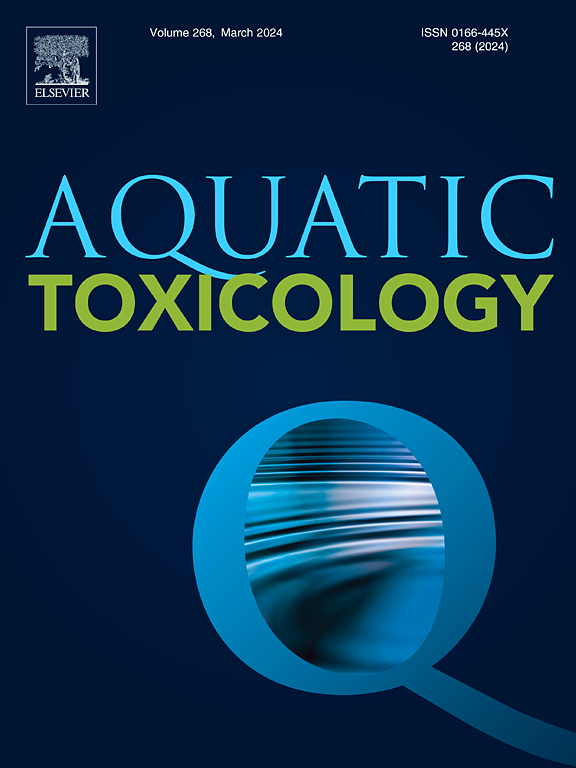Intelligent consensus-based predictions of early life stage toxicity in fish tested in compliance with OECD Test Guideline 210
IF 4.1
2区 环境科学与生态学
Q1 MARINE & FRESHWATER BIOLOGY
引用次数: 0
Abstract
Early life stage (ELS) toxicity testing in fish is a crucial test procedure used to evaluate the long-term effects of a wide range of chemicals, including pesticides, industrial chemicals, pharmaceuticals, and food additives. This test is particularly important for screening and prioritizing thousands of chemicals under the Registration, Evaluation, Authorization, and Restriction of Chemicals (REACH) regulation. In silico methods can be used to estimate the toxicity of a chemical when no experimental data is available and to reduce the cost, time, and resources involved in the experimentation process. In the present study, we developed predictive Quantitative Structure-Activity Relationship (QSAR) models to assess chronic effects of chemicals on ELS in fish. Toxicity data for ELS in fish was collected from two different sources, i.e. J-CHECK and eChemPortal, which contain robust study summaries of experimental studies performed according to OECD Test Guideline 210. The collected data included two types of endpoints – the No Observed Effect Concentration (NOEC) and the Lowest Observed Effect Concentration (LOEC), which were utilized to develop the QSAR models. Six different partial least squares (PLS) models with various descriptor combinations were created for both endpoints. These models were then employed for intelligent consensus-based prediction to enhance predictability for unknown chemicals. Among these models, the consensus model – 3 (Q2F1 = 0.71, Q2F2 = 0.71) and individual model – 3 (Q2F1 = 0.80, Q2F2 = 0.79) exhibited most promising results for both the NOEC and LOEC endpoints. Furthermore, these models were validated experimentally using experimental data from nine different industrial chemicals provided by Global Product Compliance (Europe) AB. Lastly, the models were used to screen and prioritize chemicals obtained from the Pesticide Properties (PPDB) and DrugBank databases.

根据经合组织测试指南210对鱼类生命早期毒性进行基于智能共识的预测
鱼类的早期生命阶段毒性测试是一项关键的测试程序,用于评估各种化学品的长期影响,包括杀虫剂、工业化学品、药品和食品添加剂。该测试对于根据化学品注册,评估,授权和限制(REACH)法规筛选和优先考虑数千种化学品尤为重要。在没有实验数据的情况下,计算机方法可用于估计化学物质的毒性,并减少实验过程中涉及的成本、时间和资源。在本研究中,我们建立了预测定量构效关系(QSAR)模型来评估化学物质对鱼类ELS的慢性影响。鱼类中ELS的毒性数据是从两个不同的来源收集的,即J-CHECK和eChemPortal,其中包含根据经合组织测试指南210进行的实验研究的可靠研究摘要。收集的数据包括两种类型的终点-无观测效应浓度(NOEC)和最低观测效应浓度(LOEC),用于建立QSAR模型。为两个端点创建了具有不同描述符组合的六个不同的偏最小二乘(PLS)模型。然后将这些模型用于基于共识的智能预测,以提高对未知化学物质的可预测性。在这些模型中,共识模型- 3 (Q2F1 = 0.71, Q2F2 = 0.71)和个体模型- 3 (Q2F1 = 0.80, Q2F2 = 0.79)对NOEC和LOEC端点都显示出最有希望的结果。此外,使用Global Product Compliance (Europe) AB提供的九种不同工业化学品的实验数据对这些模型进行了实验验证。最后,这些模型用于筛选和优先考虑从农药属性(PPDB)和DrugBank数据库中获得的化学品。
本文章由计算机程序翻译,如有差异,请以英文原文为准。
求助全文
约1分钟内获得全文
求助全文
来源期刊

Aquatic Toxicology
环境科学-毒理学
CiteScore
7.10
自引率
4.40%
发文量
250
审稿时长
56 days
期刊介绍:
Aquatic Toxicology publishes significant contributions that increase the understanding of the impact of harmful substances (including natural and synthetic chemicals) on aquatic organisms and ecosystems.
Aquatic Toxicology considers both laboratory and field studies with a focus on marine/ freshwater environments. We strive to attract high quality original scientific papers, critical reviews and expert opinion papers in the following areas: Effects of harmful substances on molecular, cellular, sub-organismal, organismal, population, community, and ecosystem level; Toxic Mechanisms; Genetic disturbances, transgenerational effects, behavioral and adaptive responses; Impacts of harmful substances on structure, function of and services provided by aquatic ecosystems; Mixture toxicity assessment; Statistical approaches to predict exposure to and hazards of contaminants
The journal also considers manuscripts in other areas, such as the development of innovative concepts, approaches, and methodologies, which promote the wider application of toxicological datasets to the protection of aquatic environments and inform ecological risk assessments and decision making by relevant authorities.
 求助内容:
求助内容: 应助结果提醒方式:
应助结果提醒方式:


